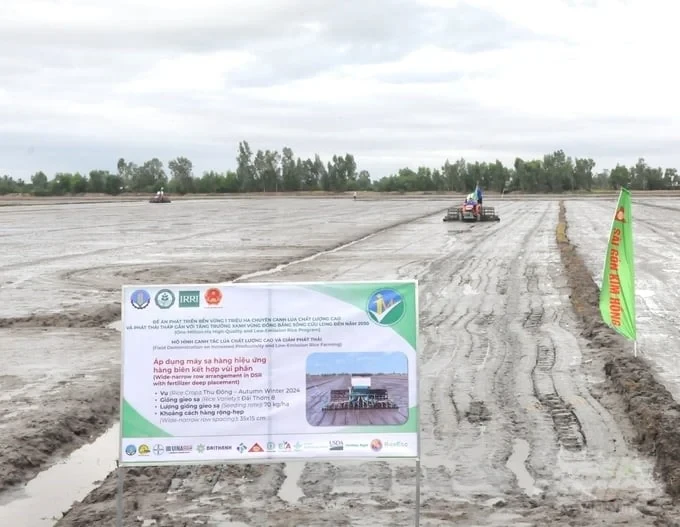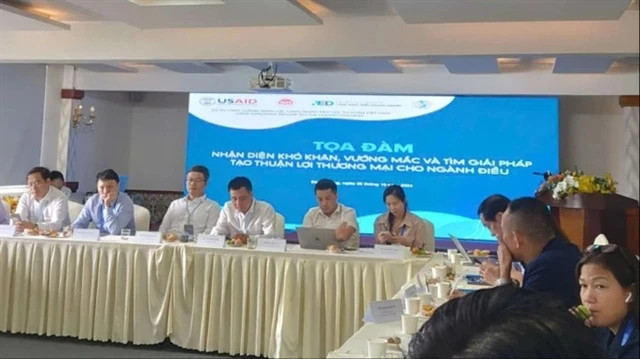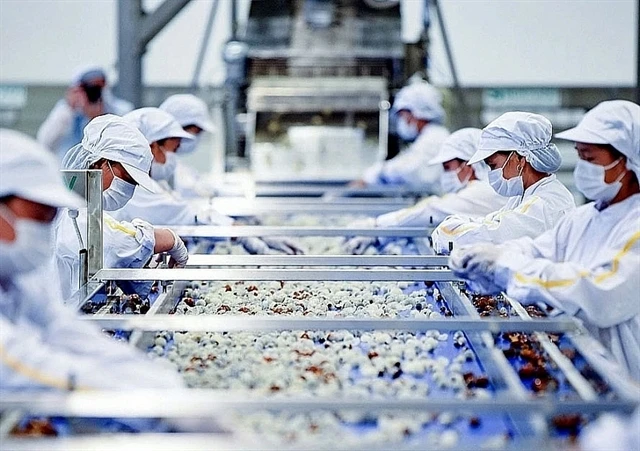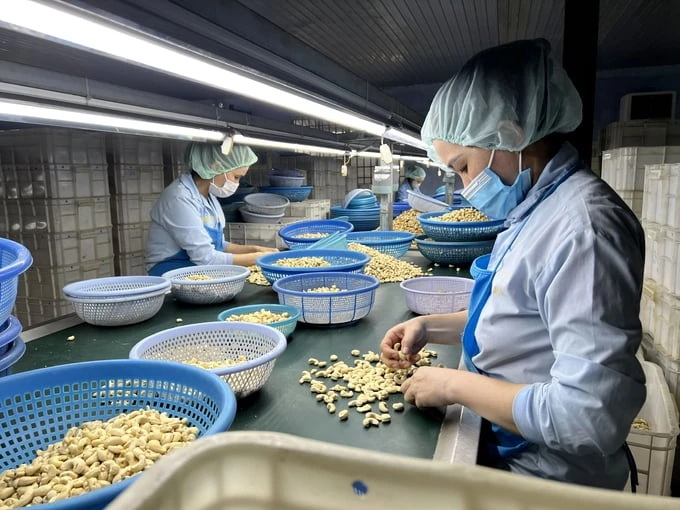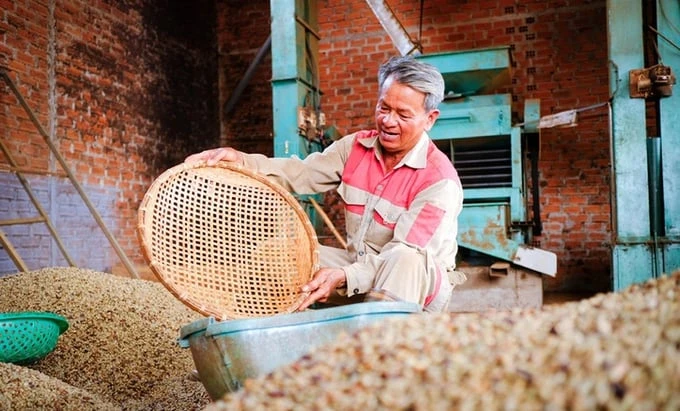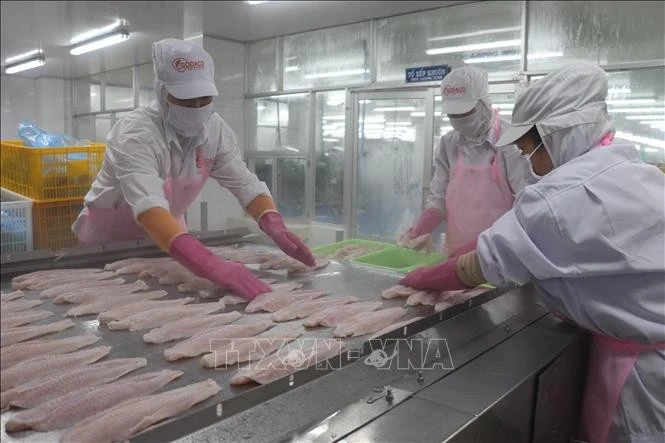On July 16, in Tan Hoi commune (Tan Hiep district, Kien Giang), the Department of Crop Production (Ministry of Agriculture and Rural Development – MARD) coordinated with the Kien Giang Provincial People's Committee to launch the project "Sustainable Development of One Million Hectares Specializing in High-Quality and Low-Emission Rice Cultivation Associated with Green Growth in the Mekong Delta until 2030."
Attending were leaders of units under MARD, the Kien Giang Provincial People's Committee, and departments, branches, localities, farmer organizations and agricultural cooperatives, the Vietnam Rice Sector Association, and mechanization, production, and trading businesses in the rice industry value chain.
At a hundred-hectare field of Phu Hoa Youth Agricultural Service Cooperative (Tan Hoi commune), more than 200 delegates visited the practical demonstration of application of advanced technology in the pilot model "Emission-Reducing Rice Cultivation, Straw, Water, and Fertilizer Management” for the 2024 autumn-winter crop.
Director of Phu Hoa Youth Agricultural Service Cooperative, Mr. Nguyen Van Huynh, shared: "We are very honored to be chosen as the first unit in Kien Giang province to launch the project with an area of 50 hectares, including 25 participating households.
The application of scientific and technical advances in the fields has long been implemented very effectively by the Cooperative and has received the support of the people. The most recent is the model of SRP rice production, cost-reducing large fields, and large fields of organic rice. With existing experience and the determination of our members, we are determined to effectively implement this project."
At the same time, the young director also affirmed that the cooperative members initially committed to units and businesses providing services that, after the 2024 summer-autumn rice harvest, farmers will not burn straw. Instead of that, they will transport it out of the field and process it as organic fertilizer. At the same time, ensure the time interval between production crops is at least 3 weeks or more so that the fields can be cleaned, plowed, tilled, and leveled. Households participating in the project will apply synchronous mechanization such as cluster seeders, row seeders, drones spraying fertilizer, medicine, seeds, etc. The production area that has been committed will implement linkage and output consumption.
Mr. Le Huu Toan, Director of the Kien Giang Department of Agriculture and Rural Development, said that Kien Giang is the country's leading province in rice production, with an annual growing area of over 700,000 hectares and a harvested output of about 4.5 million tons of commodity rice. Participating in the project "Sustainable Development of One Million Hectares Specializing in High-Quality and Low-Emission Rice Cultivation Associated with Green Growth in the Mekong Delta until 2030," Kien Giang province registered to implement 200,000 hectares.
Accordingly, the implementation will be divided into two phases. In Phase 1 (2024–2025), the province focuses on consolidating the existing area of the VnSAT Project with nearly 25,000 hectares and expanding the neighboring area outside the project area, aiming to reach 60,000 hectares by 2024 and 100,000 hectares by 2025.
In Phase 2 (2026–2030), Kieng Giang will specifically identify focus areas to establish the investment project to develop the new high-quality, emission-reducing rice area by 100,000 hectares, aiming at the goal of 200,000 hectares specializing in high-quality and low-emission rice cultivation in the province.
According to the head of Kien Giang's agricultural sector, the province has selected 12/15 districts and cities in the area to implement the project, including: Giang Thanh, Kien Luong, Hon Dat, Tan Hiep, Chau Thanh, Giong Rieng, Go Quao, An Bien, An Minh, U Minh Thuong, Vinh Thuan, and Rach Gia. As of now, all localities have developed detailed plans to implement the project in accordance with their commitments. To implement the project, the province has mobilized resources and technical support with a total budget of over VND 596 billion, focusing on the "Technical Infrastructure Support Project for Low-Carbon Rice in Kien Giang Province."
Organize production along the value chain
At the project launching ceremony, Mr. Le Thanh Tung, Deputy Director of the Department of Crop Production, emphasized that in order to form a 1 million-hectare production area for the project, it is necessary to reorganize the production system along the value chain and apply sustainable farming processes to add value, sustainably develop the rice industry to adapt to climate change, and reduce greenhouse gas emissions, thereby contributing to implementing Vietnam's commitments to the International.
Accordingly, in 2024, the project will begin to be implemented on an area of about 200,000 hectares based on rice areas under the Sustainable Agriculture Transformation Project (VnSAT), which was successfully implemented in previous years. After that, the project will gradually expand the area by over 100,000 hectares each year, with the goal of reaching 1 million hectares by 2030.
According to Mr. Le Thanh Tung, the Mekong Delta has a rice production area of about 3.8 million hectares, accounting for more than 50% of the country's rice area. Each year, the Mekong Delta contributes about 25 million tons of rice to Vietnam's total rice output of over 43 million tons.
The Mekong Delta is not only a key rice production area but also a place to produce rice for trade and export, so the goal of rice production must be to bring profit. Therefore, the project has a particularly important meaning in the direction of transforming rice farming methods towards sustainability and efficiency in the Mekong Delta while forming and developing large-scale, stable, long-term concentrated raw material areas.
The project aims to reduce input costs by 30%, contributing to reducing rice production costs for farmers by about VND 9,500 billion, increasing profit margins for rice growers, and contributing to reducing greenhouse gas emissions by 10%.
During the implementation of the project, there will be a number of new policies in line with global trends that will be piloted, such as carbon credit payment based on results for 1 million hectares of high-quality, low-emission rice associated with green growth, circular production, and multi-value exploitation in rice production, with policies and mechanisms on investment or credit aiming to attract businesses in the field of rice production and processing.
